Beyond the Mum: Houseplants That Bring That Cozy Autumn Vibe Indoors
Every year, it’s the same story. The air gets crisp, and suddenly everyone makes a mad dash for mums and decorative pumpkins to bring that cozy autumn feeling home. And listen, I get it! But those are temporary props. What if you could capture that warm, golden-hour glow with something that lasts all season and beyond?
In this article
That’s where houseplants with amazing autumn-colored foliage come in. We’re not talking about flowers, which come and go. We’re talking about stunning leaves in fiery reds, burnt oranges, golden yellows, and even deep, moody purples. These living decorations offer a dynamic connection to the season that a gourd just can’t match.
The secret is knowing which plants to pick and, more importantly, how to tweak their care as the light and heat in your home change. So, let’s dive into some of my favorites and the tricks I’ve learned over the years to keep them looking their best.
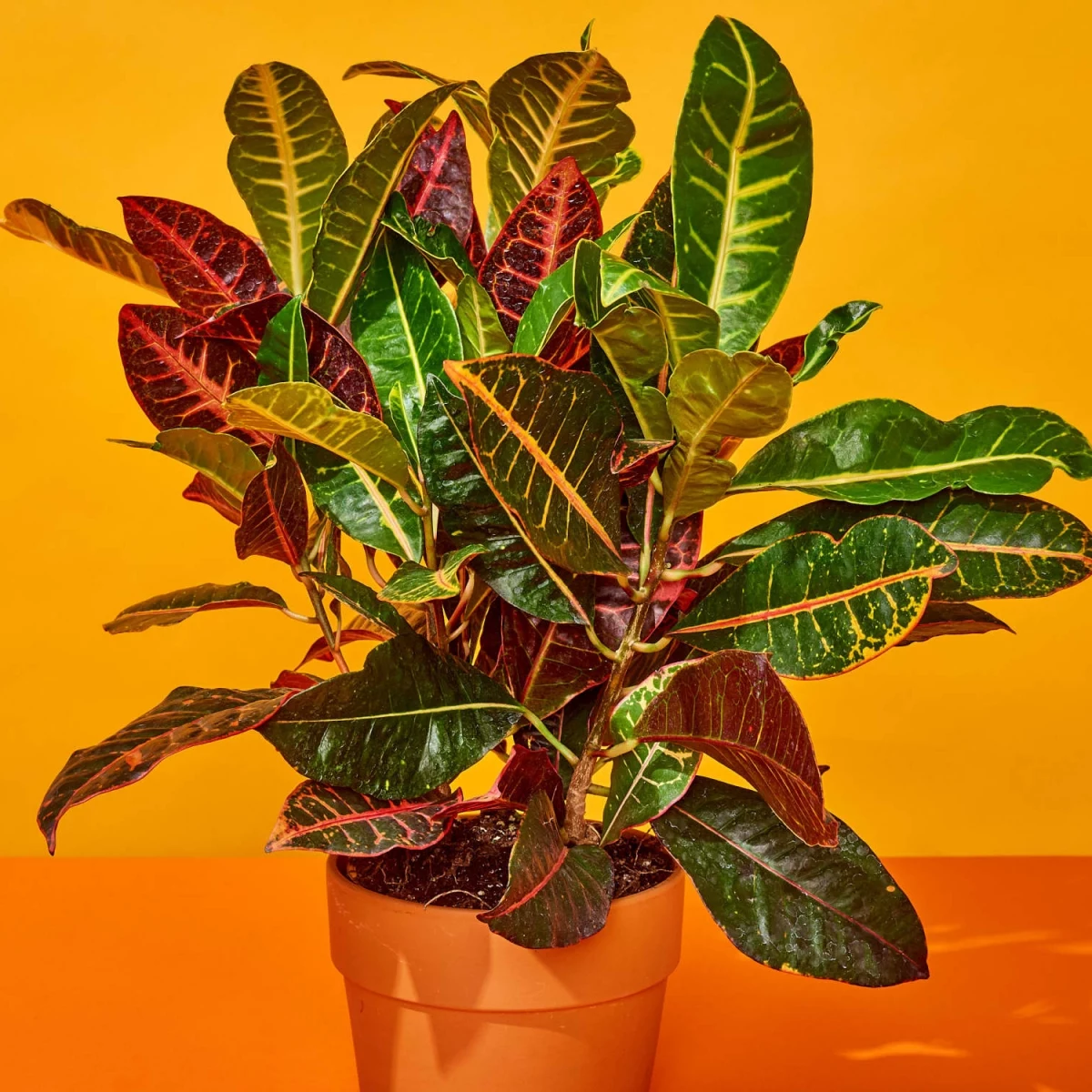
Why Do Leaves Change Color, Anyway?
Okay, a quick and painless science lesson, I promise. Understanding why your plant has color is the key to making that color pop. It’s all about pigments in the leaves.
Most of the year, leaves are packed with green chlorophyll, which is busy converting sunlight into energy. But other pigments, like carotenoids (which make yellows and oranges), are hiding in there the whole time. When the days get shorter in the fall, plants slow down, chlorophyll fades, and voilà! Those beautiful underlying yellows and oranges are finally revealed. This is what’s happening with plants like the Golden Pothos.
Then you have the reds and purples. These are created by pigments called anthocyanins, which the plant often produces in response to bright light or cooler temps. It’s basically a form of sunscreen for the plant. So, when you give a plant like a Croton plenty of bright (but not scorching) light, you’re encouraging it to produce these beautiful red pigments.

The Best Plants for Autumnal Tones
When you’re at the nursery, it’s easy to fall for the prettiest leaf. But we need to think about what will actually thrive in your space. Here are some of the most reliable options I’ve worked with.
The Showstoppers: Oranges and Reds
These are the plants that make a statement. They demand a bit more light to keep their colors blazing, but the payoff is huge.
Croton
The Croton is the undisputed king of autumn foliage, with wild splashes of red, orange, and yellow on every leaf. To keep that color vibrant, it needs a few hours of bright, indirect sun every day. A spot near an east or west-facing window is usually perfect.
- Quick Look: Crotons typically run between $15 and $40, depending on their size and how fancy the variety is.
- Heads up for pet owners: This one is a no-go for nibblers. The sap can irritate skin, and all parts of the plant are toxic to pets and humans if ingested. Keep it well out of reach.
- Good for beginners? Honestly, it can be a bit of a diva. It’s known for being fussy.
A little personal story: The first Croton I ever owned, I moved it three times in one week trying to find the “perfect” spot. It thanked me by dramatically dropping half its leaves. I learned patience the hard way! Find a good, bright spot and leave it there. A few dropped leaves after bringing it home is normal as it adjusts.
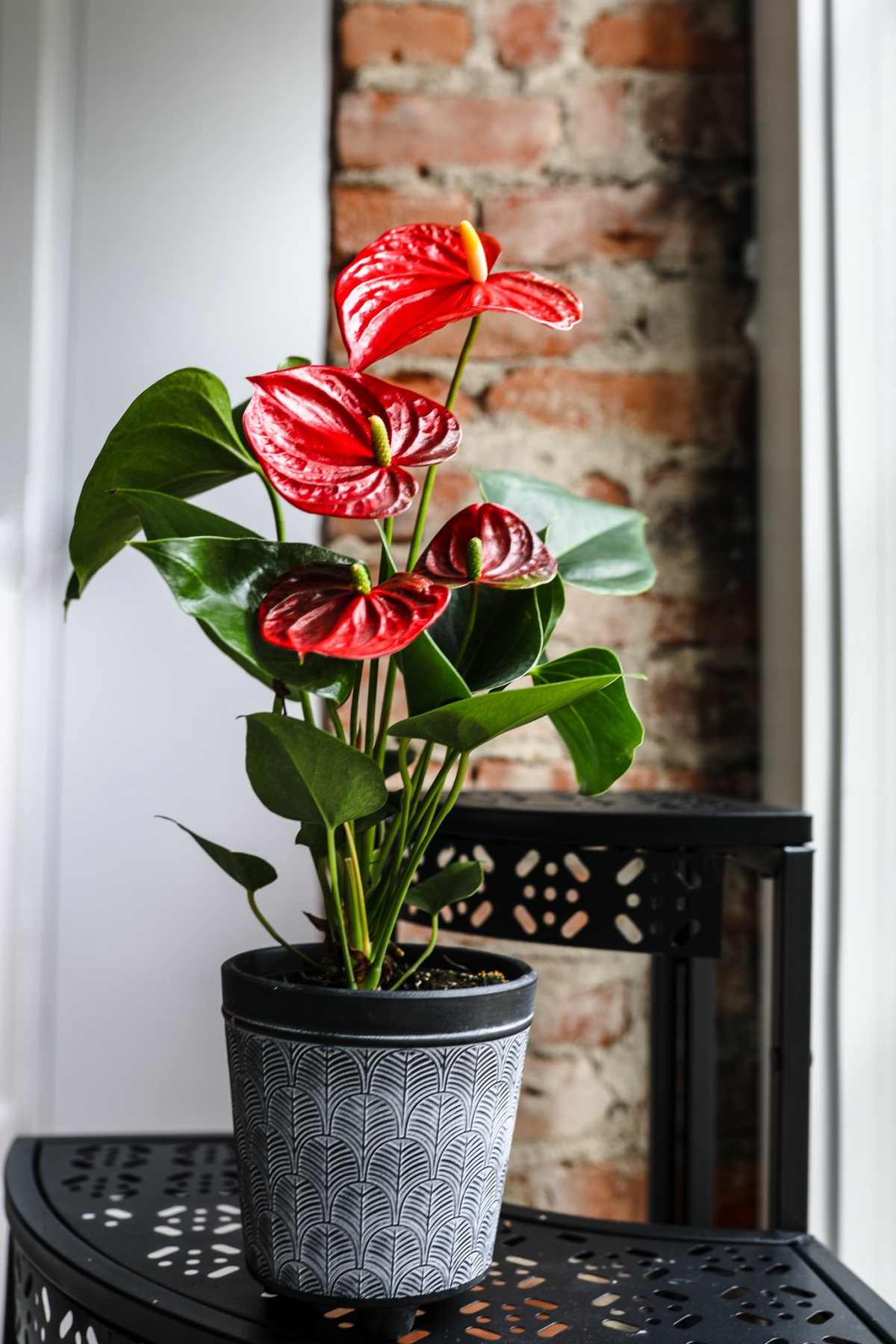
Orange-Leaf Philodendron
This one is a personal favorite. New leaves unfurl in a brilliant starburst of orange and then slowly fade to a coppery green. This means you always have a mix of colors happening! It grows upright, so it won’t vine all over the place.
- Quick Look: Expect to pay around $20 for a small one, up to $50+ for a larger, more mature plant.
- Pet Safety: Like most Philodendrons, this one is toxic if eaten, so it’s best kept away from curious pets.
- Good for beginners? Yes! It’s way more forgiving than a Croton.
My best tip for this one is to avoid overwatering. I’ve seen more of these lost to root rot than anything else. Let the soil dry out significantly. The pot should feel noticeably lighter when you lift it—that’s your cue to water.
Colorful Aglaonema (Chinese Evergreen)
For years, these were just known as durable, low-light green plants. But modern varieties feature incredible pink and red markings. They give you that pop of autumn red without needing a super bright spot.
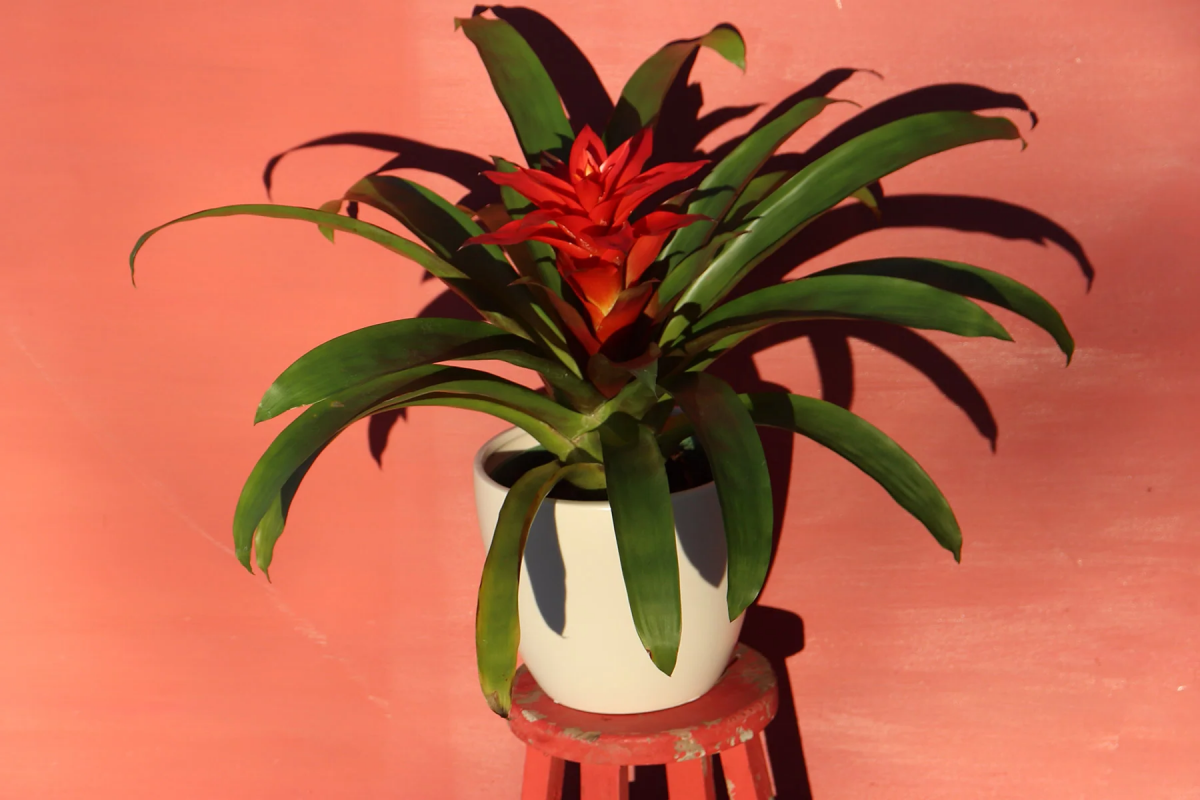
- Quick Look: These are pretty affordable, usually in the $15 to $35 range.
- Pet Safety: Unfortunately, this one is also toxic to pets if chewed on or ingested.
- Good for beginners? Absolutely. It’s one of the most reliable and easy-going colorful plants you can buy.
One thing to know: these plants HATE the cold. I learned this the hard way when a shipment arrived on a chilly day. They were only on the loading dock for 15 minutes, but it was enough to cause cold damage—ugly, dark, greasy-looking patches on the leaves. So, keep them away from drafty windows and doors in the fall and winter.
The Bright and Sunny: Yellows and Golds
Yellow tones bring such a warm and cheerful vibe, which is a welcome sight as the days get shorter.
Snake Plant
The classic variety with golden-yellow edges is a knockout. While it can tolerate low light, it won’t thrive there. To keep those yellow edges bright and wide, it really needs medium to bright indirect light. In a dark corner, it’ll survive, but it might get a little pale and sad over time.
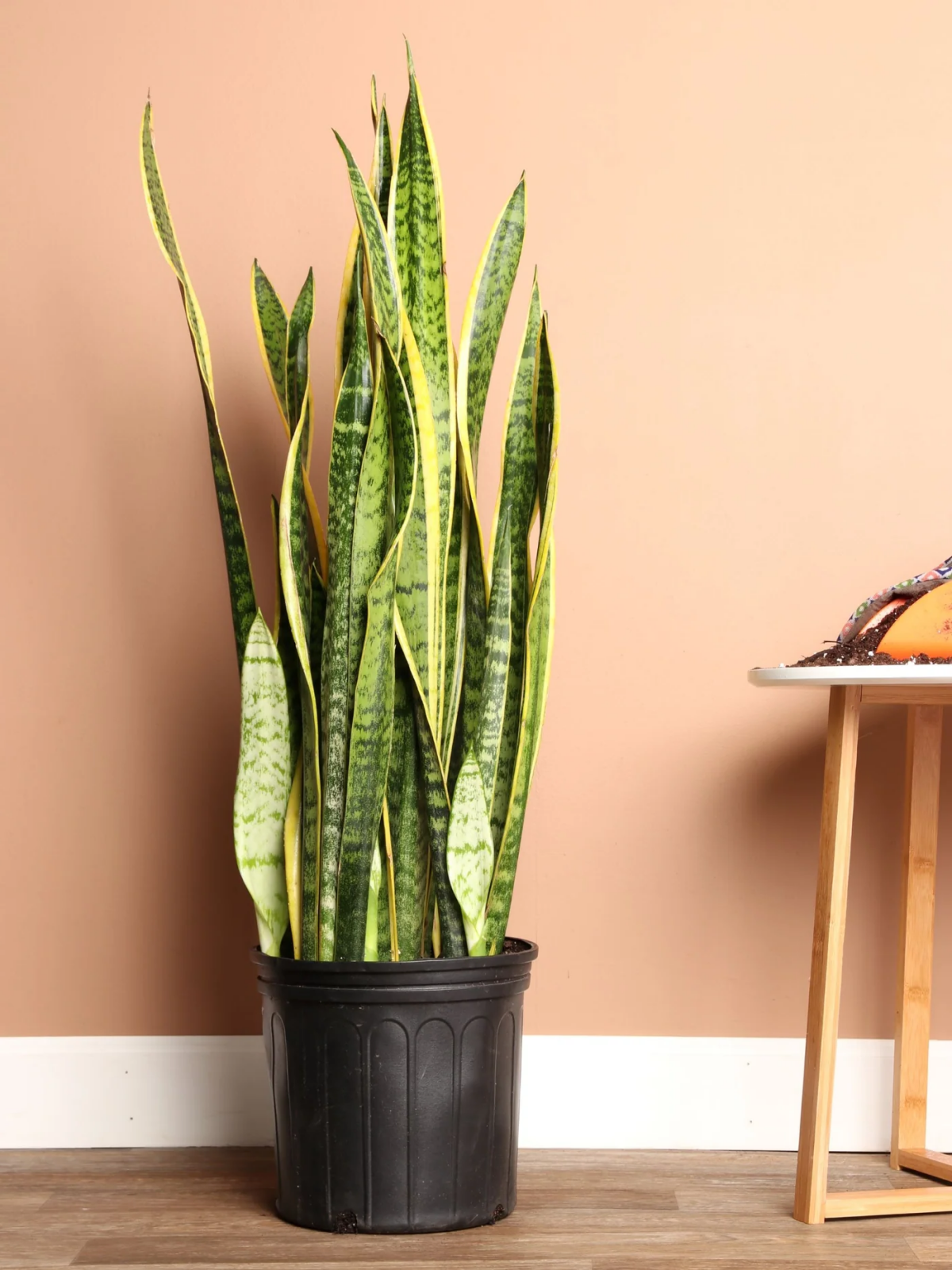
- Quick Look: A small one can be as cheap as $10-$15, with large floor plants going for $50 or more. A great value!
- Pet Safety: Mildly toxic if eaten, usually causing some digestive upset. Most pets leave its tough leaves alone, but it’s good to be aware.
- Good for beginners? It’s the ULTIMATE beginner plant. It thrives on neglect.
The biggest enemy of a Snake Plant is too much love, specifically too much water. In the fall and winter, I might water mine only once a month. Seriously.
Golden Pothos
This is probably the world’s most popular houseplant for a reason—it’s nearly indestructible. The leaves are splashed with golden-yellow, and that color is a direct response to light. More light = more gold. Simple as that.
- Quick Look: Super budget-friendly. You can find a small plant for $5-$10 or a big hanging basket for around $20-$25.
- Pet Safety: This plant is toxic to cats and dogs, causing mouth irritation and vomiting if chewed on.
- Good for beginners? YES. If you think you have a black thumb, start here.
Try This Today: Go look at your Golden Pothos. Is it looking a little leggy, with long, bare stems? Or more green than yellow? That’s its way of screaming for more light and a haircut. Don’t be afraid to trim those long vines back. Every cut you make will encourage it to grow two new stems, making the plant much fuller. Plus, you can stick the cuttings in a jar of water and boom—free plants!
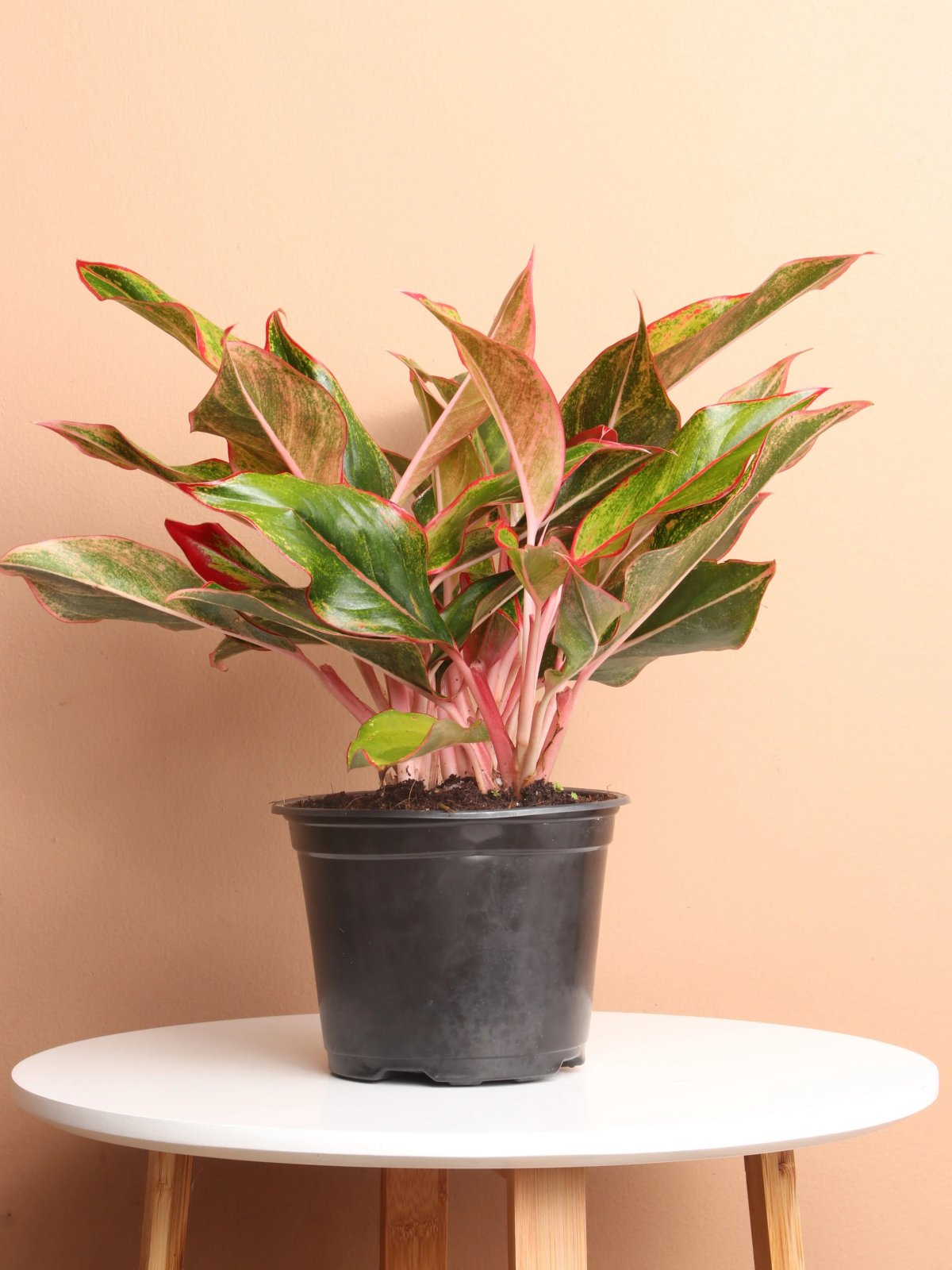
The Moody and Rich: Purples and Bronzes
These deep, rich colors add a layer of sophistication and contrast beautifully with traditional autumn decor.
Purple Shamrock (Oxalis)
With its deep purple, clover-like leaves, this plant is just plain cool. The best part is that the leaves physically open and close with the light—they fold up at night and open again in the morning. It’s so fun to watch.
- Quick Look: Usually sold as small potted plants or bulbs for around $10-$20.
- Pet Safety: Contains oxalic acid, which is toxic to pets in large quantities. Best to keep it out of reach.
- Good for beginners? It has one weird quirk, but otherwise, yes!
Here’s the quirk: At some point, it will likely start to look sad and die back. New owners panic and toss it, thinking they killed it. DON’T! This plant grows from little bulbs and needs a dormancy period. If it fades, just stop watering, let the leaves die back, and stick the pot in a dark closet for a few weeks. When you see new shoots, bring it back into the light, give it a drink, and it’ll return better than ever.
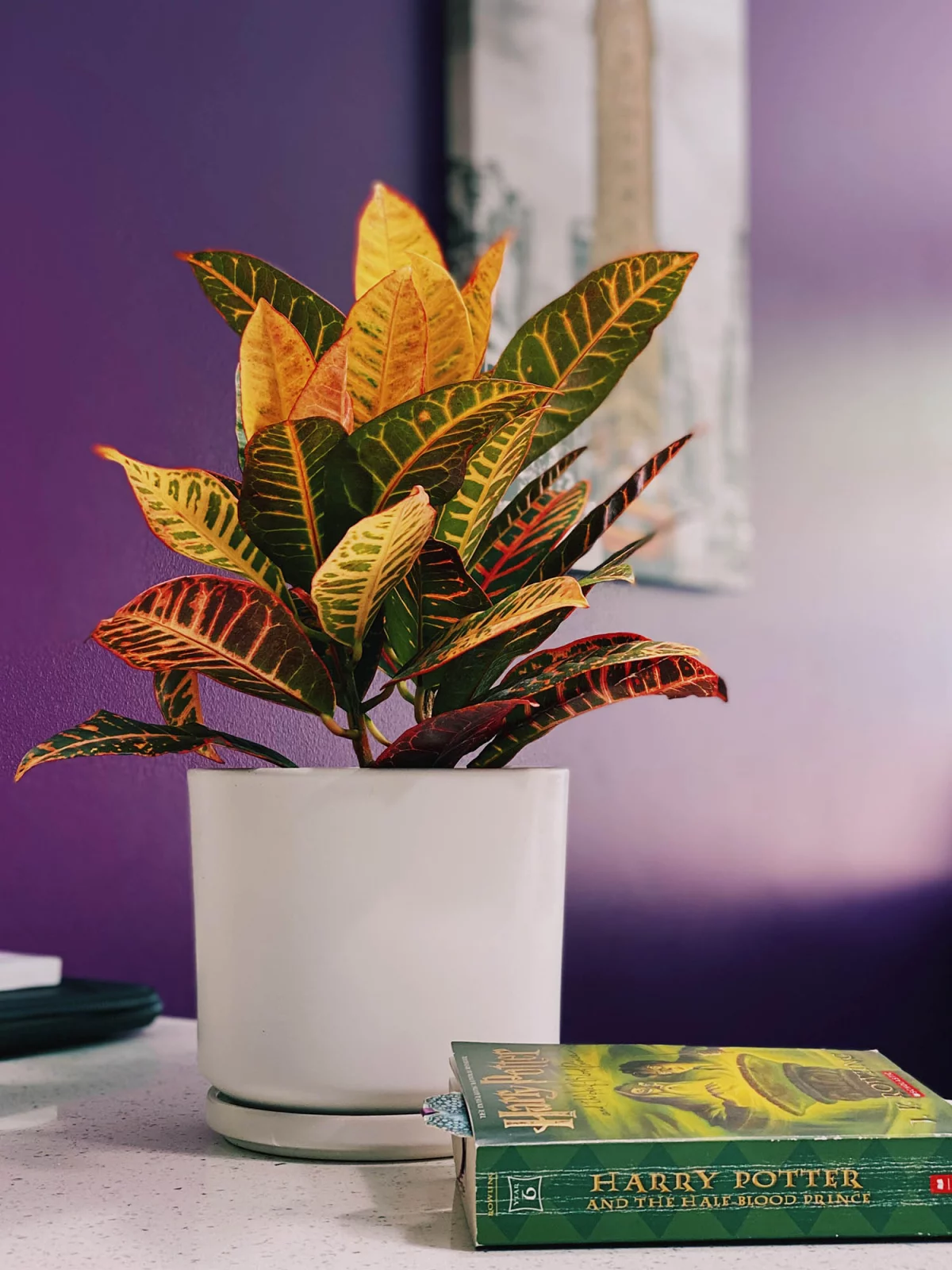
How to Adjust Your Care Routine for Fall
Your home’s environment changes when the heat kicks on and the sun gets lower. Your plant care needs to change with it.
Watering: The #1 Mistake
If I can give you only one piece of advice, it’s this: water less in the fall and winter. Plant growth slows way down, so they just don’t need as much water. Sticking to your summer schedule is the fastest way to get root rot. Before you water, check the soil. And I don’t mean just poking the surface. Stick your finger in there up to your second knuckle. If you feel moisture at the tip, wait a few more days.
A client of mine once killed a magnificent Fiddle Leaf Fig by watering it religiously every Saturday, all year long. That schedule worked in the summer, but by October, it was a death sentence. The schedule didn’t adapt, and the plant paid the price.
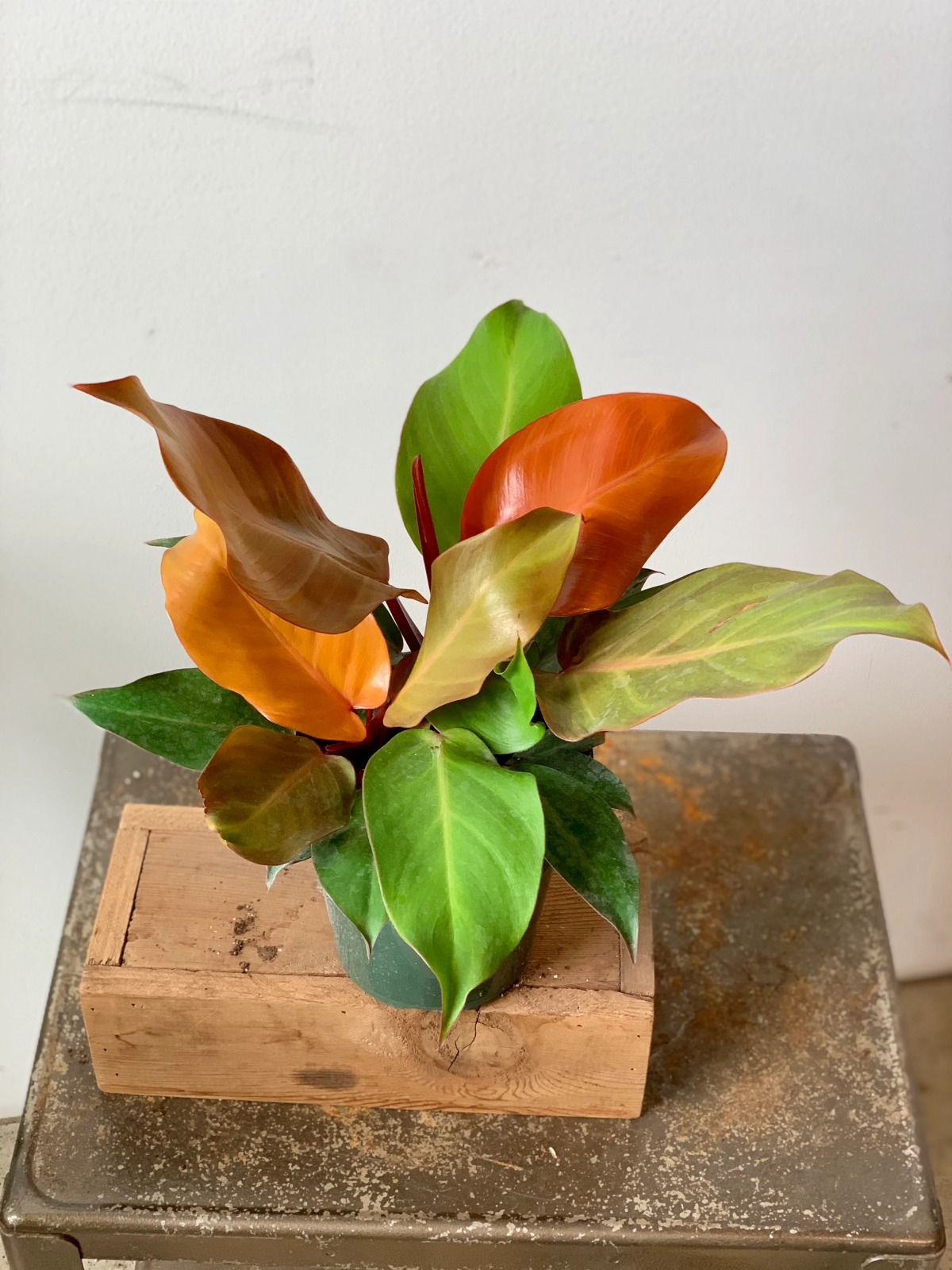
Humidity: The Invisible Enemy
Central heating dries out the air, which tropical plants hate. It can lead to crispy brown leaf edges and invite pests like spider mites. An easy fix is to group your plants together to create a little humid microclimate. For my more sensitive plants, a small humidifier is a game-changer. You can also pick up a cheap hygrometer for about $10 at a hardware store to see where your room is at—aim for 40-60% humidity.
Fertilizing: Just Stop
Think of fall and winter as hibernation time. Feeding your plants now just encourages weak, flimsy growth. As a rule, I stop fertilizing all my foliage plants around October and don’t start again until I see strong signs of new growth in the spring.
Bringing Outdoor Plants Inside? Read This First.
If you gave your plants a summer vacation outside, you have to be careful bringing them back in. They can be a Trojan horse for pests that will infest your entire indoor collection.
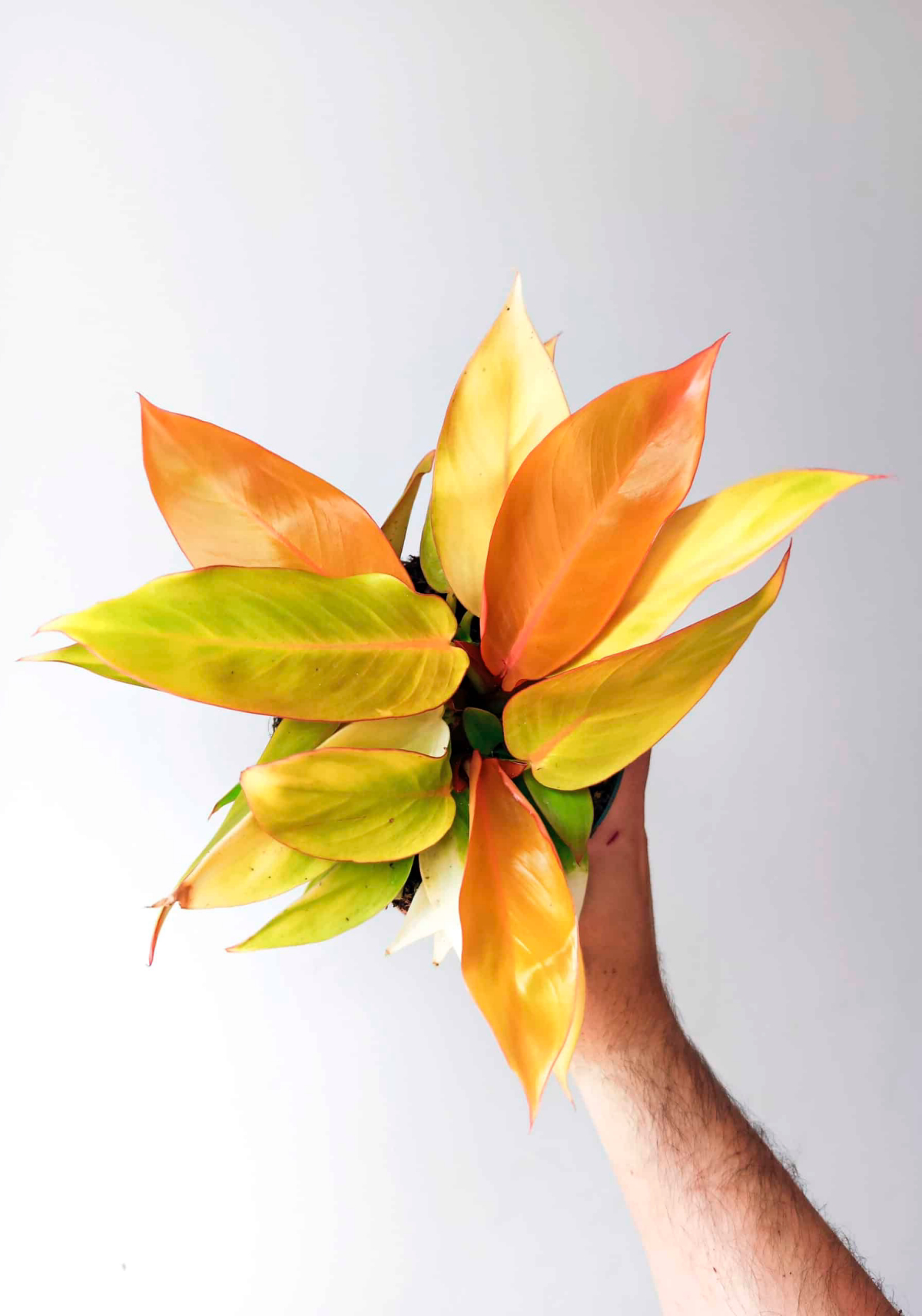
You’ll want a simple Quarantine Kit: a bottle of insecticidal soap or neem oil concentrate (about $10-$15) and a decent spray bottle ($5). First, blast the plant with a hose to knock off any obvious pests. Then, give it a thorough spray with the soap or oil, making sure to get the undersides of the leaves.
Now for the most important step: quarantine. Isolate the plant in a separate room—a bathroom or spare bedroom works great—for at least two to four weeks. Check it every few days for any new pest activity. It might seem like a hassle, but it’s the only way to protect the rest of your plant family.
Inspirational Gallery
The secret to intense color isn’t just the plant, it’s the placement. Many of the most vibrant reds and oranges, especially in plants like Crotons or the Aglaonema ‘Siam Aurora’, are a direct response to bright, indirect light. Think of it as the plant getting a healthy ‘suntan’. If you notice your plant’s fiery tones fading to green, slowly move it to a brighter spot over a few days. You’ll be encouraging the production of those stunning color pigments the article mentions.
- Deeper, more saturated color that pops.
- A fuller, bushier plant shape.
- Prevents the weak, stretched-out look known as ‘legginess’.
The secret for plants like Coleus or Iresine? A simple technique called “pinching back.” Gently pinch off the top set of new leaves with your fingers. This encourages the plant to branch out from below, creating a much more robust and vibrant specimen.
My plant’s vibrant colors are fading. What am I doing wrong?
It’s almost always about light! As autumn days get shorter, the prime sunny spot from summer might now be in the shade. For color-changers like the Philodendron ‘Prince of Orange’, new leaves emerge bright orange and fade to green over time, which is normal. But if the whole plant looks dull, it’s likely craving more light. Try moving it closer to an east or south-facing window, and remember to wipe the leaves clean of dust to help them absorb every last ray.
Did you know? The global wellness real estate market, which includes biophilic design, is projected to reach $887 billion by 2027.
This isn’t just a trend; it’s a movement towards creating healthier, more natural indoor spaces. Bringing in plants with warm, autumnal tones is a perfect example of biophilic design in action. You’re not just decorating; you’re creating a sensory connection to the natural cycle of the seasons, which can genuinely boost mood and reduce stress.
Create a miniature autumn scene by grouping plants together. Don’t just line them up; think in layers. Combine the tall, sculptural form of a ‘Burgundy’ Rubber Plant with the cascading, fine-textured foliage of a golden Pothos. Add a pop of fiery red with a small Fittonia (Nerve Plant) at the base. This “living bouquet” creates a powerful focal point that feels much more intentional and lush than a single plant on its own.
Terracotta Pots: These classic, unglazed clay pots are porous, allowing air and water to move through the sides. This helps the soil dry out faster, which is a major plus in the lower-light, lower-growth months of fall and winter, preventing root rot for plants like succulents and Snake Plants.
Glazed Ceramic Pots: These hold moisture for much longer. They are a great choice for thirsty plants like Calatheas or ferns, but require more careful watering in the fall to avoid waterlogging the roots. Aesthetically, their wide range of colors can beautifully complement a plant’s foliage—imagine a ‘Red Star’ Cordyline in a deep navy blue pot.
Many of the pigments that create red and purple hues in leaves—anthocyanins—are the same compounds that give color to blueberries, red apples, and autumn maple leaves.
Think beyond the pot. Create a cozy autumn ‘vignette’ on a side table or bookshelf. Place your fall-colored plant, perhaps an Oxalis ‘Plum Crazy’, on a stack of old books. Nestle it beside a brass candle holder and a small decorative gourd. The combination of living color with rich textures like aged paper and warm metal evokes a feeling of a quiet, literary afternoon, elevating the plant from a simple object to part of a story.
As the days shorten, your plants’ needs change. It’s time to adjust their care routine to match the season.
- Reduce Water: Less light and slower growth mean your plants are less thirsty. Let the top 1-2 inches of soil dry out completely before watering again.
- Pause Fertilizing: Most houseplants enter a dormant or slow-growth period in fall. Stop feeding them until you see signs of new growth in the spring.
- Check for Pests: If you’re bringing any plants in from outdoors, inspect them carefully for hitchhikers like spider mites or aphids before they can spread to your other plants.
For a unique display, try embracing the Japanese art of Kokedama. Translating to “moss ball,” it involves wrapping a plant’s roots in a ball of soil and moss, then securing it with string. A plant with striking autumn foliage, like a Coral Bells (Heuchera) with deep purple or amber leaves, looks absolutely stunning as a Kokedama. You can hang it or display it on a simple ceramic dish. It turns the plant into a living sculpture and a guaranteed conversation starter.










